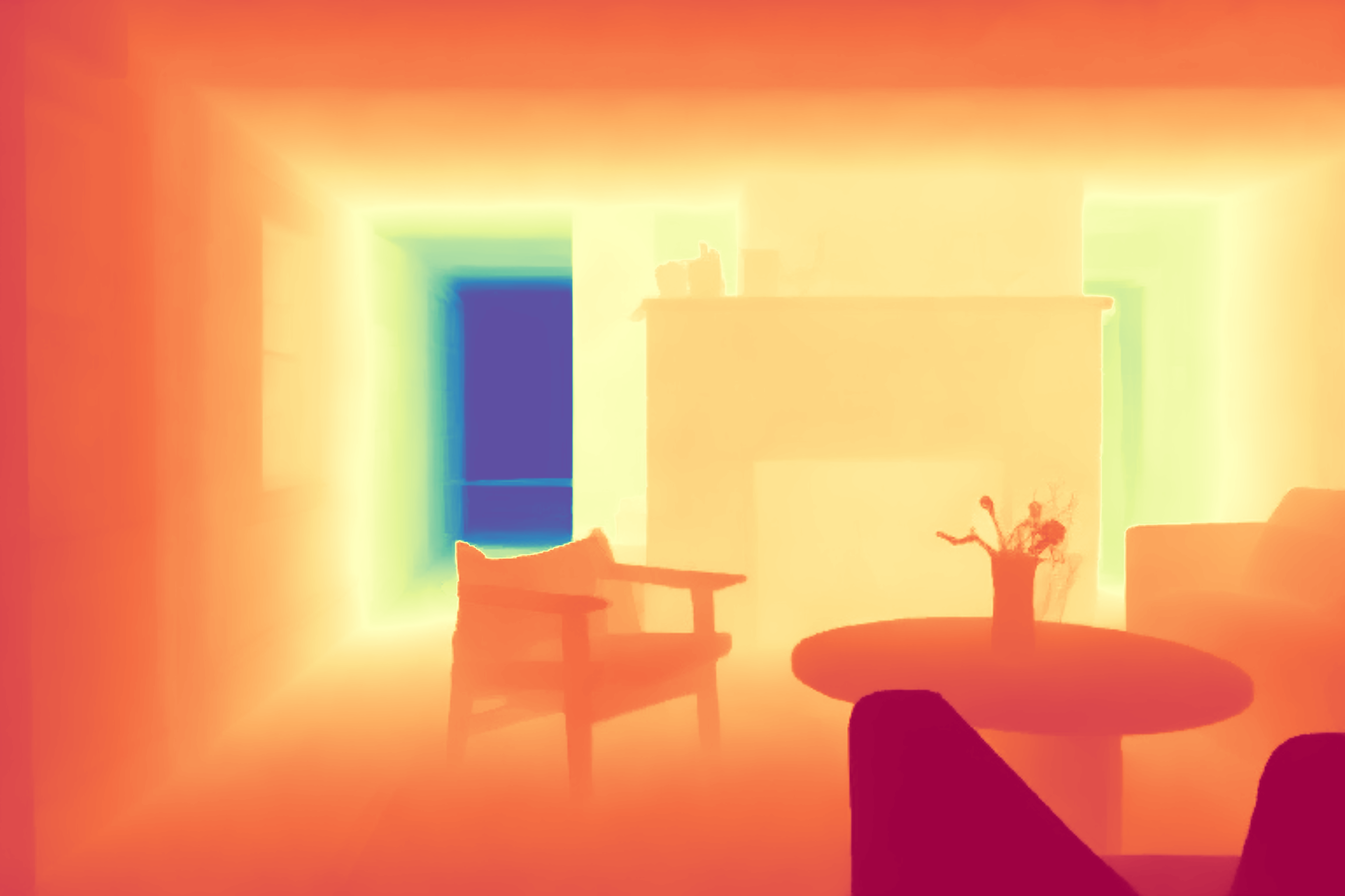# Load community pipelines and components
[[open-in-colab]]
## Community pipelines
> [!TIP] Take a look at GitHub Issue [#841](https://github.com/huggingface/diffusers/issues/841) for more context about why we're adding community pipelines to help everyone easily share their work without being slowed down.
Community pipelines are any [`DiffusionPipeline`] class that are different from the original paper implementation (for example, the [`StableDiffusionControlNetPipeline`] corresponds to the [Text-to-Image Generation with ControlNet Conditioning](https://arxiv.org/abs/2302.05543) paper). They provide additional functionality or extend the original implementation of a pipeline.
There are many cool community pipelines like [Marigold Depth Estimation](https://github.com/huggingface/diffusers/tree/main/examples/community#marigold-depth-estimation) or [InstantID](https://github.com/huggingface/diffusers/tree/main/examples/community#instantid-pipeline), and you can find all the official community pipelines [here](https://github.com/huggingface/diffusers/tree/main/examples/community).
There are two types of community pipelines, those stored on the Hugging Face Hub and those stored on Diffusers GitHub repository. Hub pipelines are completely customizable (scheduler, models, pipeline code, etc.) while Diffusers GitHub pipelines are only limited to custom pipeline code.
| | GitHub community pipeline | HF Hub community pipeline |
|----------------|------------------------------------------------------------------------------------------------------------------|-------------------------------------------------------------------------------------------|
| usage | same | same |
| review process | open a Pull Request on GitHub and undergo a review process from the Diffusers team before merging; may be slower | upload directly to a Hub repository without any review; this is the fastest workflow |
| visibility | included in the official Diffusers repository and documentation | included on your HF Hub profile and relies on your own usage/promotion to gain visibility |
### Load from a local file
Community pipelines can also be loaded from a local file if you pass a file path instead. The path to the passed directory must contain a pipeline.py file that contains the pipeline class.
```py
pipeline = DiffusionPipeline.from_pretrained(
"runwayml/stable-diffusion-v1-5",
custom_pipeline="./path/to/pipeline_directory/",
clip_model=clip_model,
feature_extractor=feature_extractor,
use_safetensors=True,
)
```
### Load from a specific version
By default, community pipelines are loaded from the latest stable version of Diffusers. To load a community pipeline from another version, use the `custom_revision` parameter.
For example, to load from the main branch:
```py
pipeline = DiffusionPipeline.from_pretrained(
"runwayml/stable-diffusion-v1-5",
custom_pipeline="clip_guided_stable_diffusion",
custom_revision="main",
clip_model=clip_model,
feature_extractor=feature_extractor,
use_safetensors=True,
)
```
For example, to load from a previous version of Diffusers like v0.25.0:
```py
pipeline = DiffusionPipeline.from_pretrained(
"runwayml/stable-diffusion-v1-5",
custom_pipeline="clip_guided_stable_diffusion",
custom_revision="v0.25.0",
clip_model=clip_model,
feature_extractor=feature_extractor,
use_safetensors=True,
)
```
### Load with from_pipe
Community pipelines can also be loaded with the [`~DiffusionPipeline.from_pipe`] method which allows you to load and reuse multiple pipelines without any additional memory overhead (learn more in the [Reuse a pipeline](./loading#reuse-a-pipeline) guide). The memory requirement is determined by the largest single pipeline loaded.
For example, let's load a community pipeline that supports [long prompts with weighting](https://github.com/huggingface/diffusers/tree/main/examples/community#long-prompt-weighting-stable-diffusion) from a Stable Diffusion pipeline.
```py
import torch
from diffusers import DiffusionPipeline
pipe_sd = DiffusionPipeline.from_pretrained("emilianJR/CyberRealistic_V3", torch_dtype=torch.float16)
pipe_sd.to("cuda")
# load long prompt weighting pipeline
pipe_lpw = DiffusionPipeline.from_pipe(
pipe_sd,
custom_pipeline="lpw_stable_diffusion",
).to("cuda")
prompt = "cat, hiding in the leaves, ((rain)), zazie rainyday, beautiful eyes, macro shot, colorful details, natural lighting, amazing composition, subsurface scattering, amazing textures, filmic, soft light, ultra-detailed eyes, intricate details, detailed texture, light source contrast, dramatic shadows, cinematic light, depth of field, film grain, noise, dark background, hyperrealistic dslr film still, dim volumetric cinematic lighting"
neg_prompt = "(deformed iris, deformed pupils, semi-realistic, cgi, 3d, render, sketch, cartoon, drawing, anime, mutated hands and fingers:1.4), (deformed, distorted, disfigured:1.3), poorly drawn, bad anatomy, wrong anatomy, extra limb, missing limb, floating limbs, disconnected limbs, mutation, mutated, ugly, disgusting, amputation"
generator = torch.Generator(device="cpu").manual_seed(20)
out_lpw = pipe_lpw(
prompt,
negative_prompt=neg_prompt,
width=512,
height=512,
max_embeddings_multiples=3,
num_inference_steps=50,
generator=generator,
).images[0]
out_lpw
```
 Stable Diffusion with long prompt weighting
Stable Diffusion with long prompt weighting
 Stable Diffusion
Stable Diffusion
## Example community pipelines
Community pipelines are a really fun and creative way to extend the capabilities of the original pipeline with new and unique features. You can find all community pipelines in the [diffusers/examples/community](https://github.com/huggingface/diffusers/tree/main/examples/community) folder with inference and training examples for how to use them.
This section showcases a couple of the community pipelines and hopefully it'll inspire you to create your own (feel free to open a PR for your community pipeline and ping us for a review)!
> [!TIP]
> The [`~DiffusionPipeline.from_pipe`] method is particularly useful for loading community pipelines because many of them don't have pretrained weights and add a feature on top of an existing pipeline like Stable Diffusion or Stable Diffusion XL. You can learn more about the [`~DiffusionPipeline.from_pipe`] method in the [Load with from_pipe](custom_pipeline_overview#load-with-from_pipe) section.
## Community components
Community components allow users to build pipelines that may have customized components that are not a part of Diffusers. If your pipeline has custom components that Diffusers doesn't already support, you need to provide their implementations as Python modules. These customized components could be a VAE, UNet, and scheduler. In most cases, the text encoder is imported from the Transformers library. The pipeline code itself can also be customized.
This section shows how users should use community components to build a community pipeline.
You'll use the [showlab/show-1-base](https://huggingface.co/showlab/show-1-base) pipeline checkpoint as an example.
1. Import and load the text encoder from Transformers:
```python
from transformers import T5Tokenizer, T5EncoderModel
pipe_id = "showlab/show-1-base"
tokenizer = T5Tokenizer.from_pretrained(pipe_id, subfolder="tokenizer")
text_encoder = T5EncoderModel.from_pretrained(pipe_id, subfolder="text_encoder")
```
2. Load a scheduler:
```python
from diffusers import DPMSolverMultistepScheduler
scheduler = DPMSolverMultistepScheduler.from_pretrained(pipe_id, subfolder="scheduler")
```
3. Load an image processor:
```python
from transformers import CLIPImageProcessor
feature_extractor = CLIPImageProcessor.from_pretrained(pipe_id, subfolder="feature_extractor")
```
In steps 4 and 5, the custom [UNet](https://github.com/showlab/Show-1/blob/main/showone/models/unet_3d_condition.py) and [pipeline](https://huggingface.co/sayakpaul/show-1-base-with-code/blob/main/unet/showone_unet_3d_condition.py) implementation must match the format shown in their files for this example to work.
4. Now you'll load a [custom UNet](https://github.com/showlab/Show-1/blob/main/showone/models/unet_3d_condition.py), which in this example, has already been implemented in [showone_unet_3d_condition.py](https://huggingface.co/sayakpaul/show-1-base-with-code/blob/main/unet/showone_unet_3d_condition.py) for your convenience. You'll notice the [`UNet3DConditionModel`] class name is changed to `ShowOneUNet3DConditionModel` because [`UNet3DConditionModel`] already exists in Diffusers. Any components needed for the `ShowOneUNet3DConditionModel` class should be placed in showone_unet_3d_condition.py.
Once this is done, you can initialize the UNet:
```python
from showone_unet_3d_condition import ShowOneUNet3DConditionModel
unet = ShowOneUNet3DConditionModel.from_pretrained(pipe_id, subfolder="unet")
```
5. Finally, you'll load the custom pipeline code. For this example, it has already been created for you in [pipeline_t2v_base_pixel.py](https://huggingface.co/sayakpaul/show-1-base-with-code/blob/main/pipeline_t2v_base_pixel.py). This script contains a custom `TextToVideoIFPipeline` class for generating videos from text. Just like the custom UNet, any code needed for the custom pipeline to work should go in pipeline_t2v_base_pixel.py.
Once everything is in place, you can initialize the `TextToVideoIFPipeline` with the `ShowOneUNet3DConditionModel`:
```python
from pipeline_t2v_base_pixel import TextToVideoIFPipeline
import torch
pipeline = TextToVideoIFPipeline(
unet=unet,
text_encoder=text_encoder,
tokenizer=tokenizer,
scheduler=scheduler,
feature_extractor=feature_extractor
)
pipeline = pipeline.to(device="cuda")
pipeline.torch_dtype = torch.float16
```
Push the pipeline to the Hub to share with the community!
```python
pipeline.push_to_hub("custom-t2v-pipeline")
```
After the pipeline is successfully pushed, you need to make a few changes:
1. Change the `_class_name` attribute in [model_index.json](https://huggingface.co/sayakpaul/show-1-base-with-code/blob/main/model_index.json#L2) to `"pipeline_t2v_base_pixel"` and `"TextToVideoIFPipeline"`.
2. Upload `showone_unet_3d_condition.py` to the [unet](https://huggingface.co/sayakpaul/show-1-base-with-code/blob/main/unet/showone_unet_3d_condition.py) subfolder.
3. Upload `pipeline_t2v_base_pixel.py` to the pipeline [repository](https://huggingface.co/sayakpaul/show-1-base-with-code/tree/main).
To run inference, add the `trust_remote_code` argument while initializing the pipeline to handle all the "magic" behind the scenes.
> [!WARNING]
> As an additional precaution with `trust_remote_code=True`, we strongly encourage you to pass a commit hash to the `revision` parameter in [`~DiffusionPipeline.from_pretrained`] to make sure the code hasn't been updated with some malicious new lines of code (unless you fully trust the model owners).
```python
from diffusers import DiffusionPipeline
import torch
pipeline = DiffusionPipeline.from_pretrained(
"/", trust_remote_code=True, torch_dtype=torch.float16
).to("cuda")
prompt = "hello"
# Text embeds
prompt_embeds, negative_embeds = pipeline.encode_prompt(prompt)
# Keyframes generation (8x64x40, 2fps)
video_frames = pipeline(
prompt_embeds=prompt_embeds,
negative_prompt_embeds=negative_embeds,
num_frames=8,
height=40,
width=64,
num_inference_steps=2,
guidance_scale=9.0,
output_type="pt"
).frames
```
As an additional reference, take a look at the repository structure of [stabilityai/japanese-stable-diffusion-xl](https://huggingface.co/stabilityai/japanese-stable-diffusion-xl/) which also uses the `trust_remote_code` feature.
```python
from diffusers import DiffusionPipeline
import torch
pipeline = DiffusionPipeline.from_pretrained(
"stabilityai/japanese-stable-diffusion-xl", trust_remote_code=True
)
pipeline.to("cuda")
```







